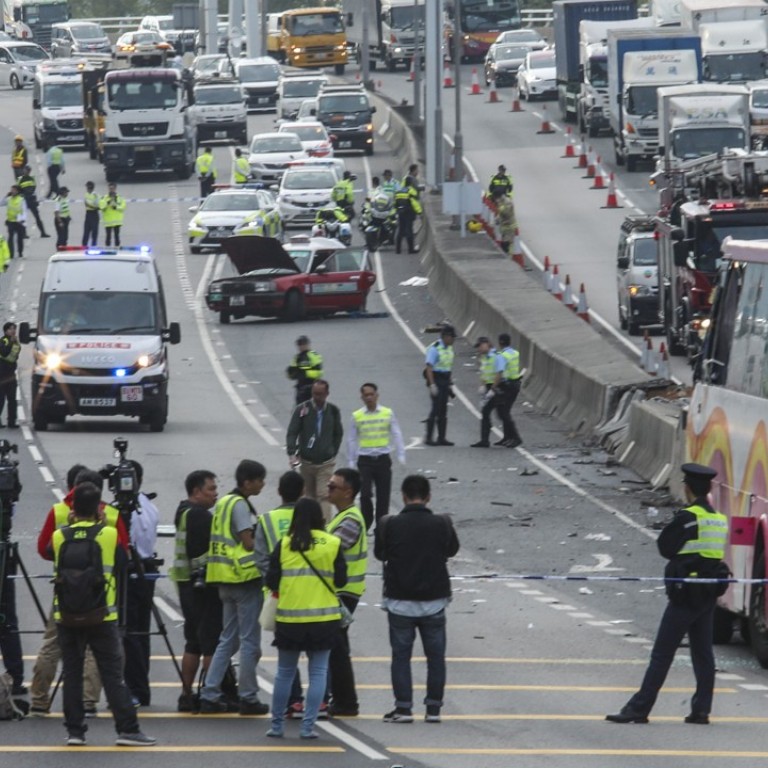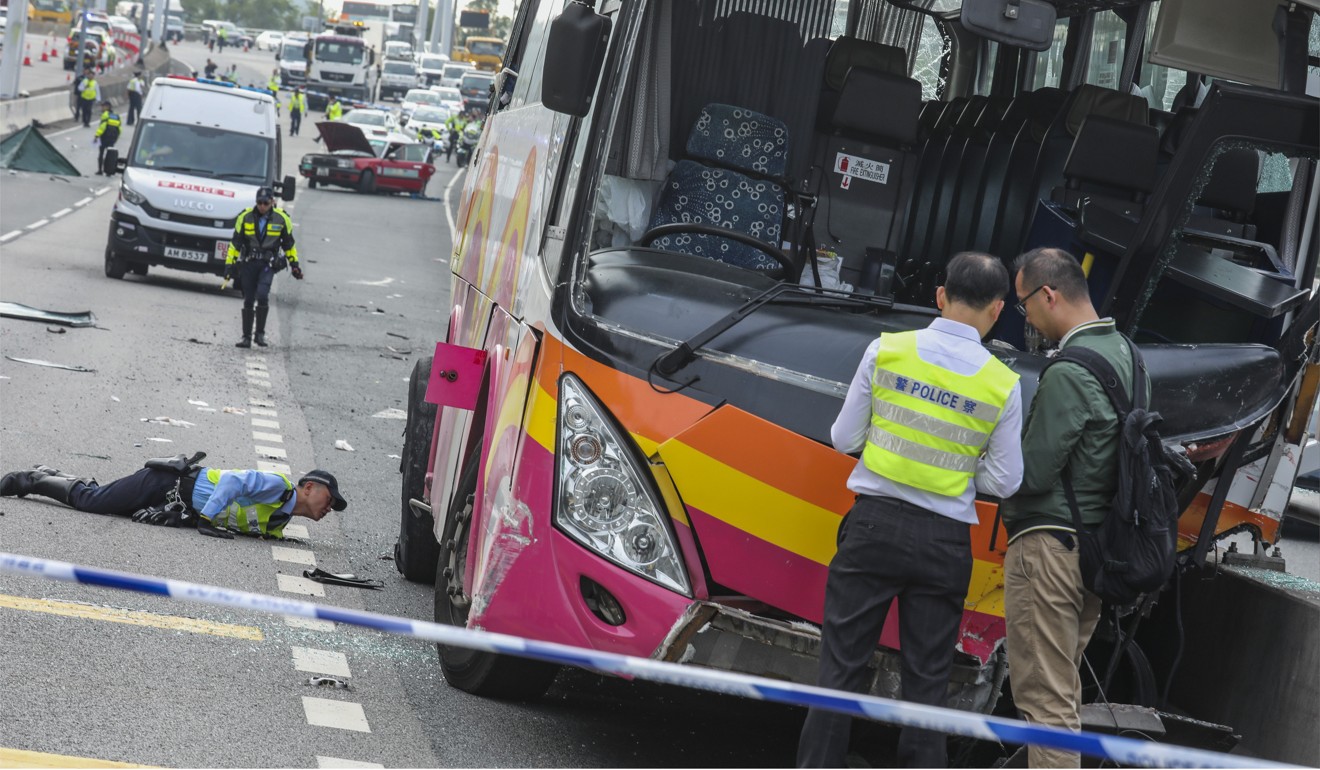
Calls mount for stricter rules on wearing seat belts on buses and driver working hours after crash kills five in Hong Kong
- Transport Department will hold a special meeting with coach operators to review safety issues
- Accident sparks vigorous calls for tighter regulation of non-franchised buses
Expressing concern over the fatal crash in which a coach rammed into a taxi on Friday morning, the department said it would meet the Public Omnibus Operators Association later to “study and review the issue of operational safety of non-franchised buses”.
“According to the department’s records, the coach involved was equipped with seats with a high back and seat belts. The latest vehicle examination was conducted in February this year and the coach passed the safety tests,” it said.

The accident on Cheung Tsing Highway sparked vigorous calls for tighter regulation of non-franchised buses.
At about 5am, the coach, operated by Kwoon Chung Bus, crashed into a taxi that had broken down at the side of the road before hitting a concrete road divider.
Kwoon Chung boss Matthew Wong Leung-pak is also the association’s chairman.
Association deputy chairman Tang Chi-keung said safety measures for coaches had been upgraded over the past few years, including a stronger chassis, and the installation of seat belts and soft safety boards on the back of seats. He estimated fewer than 2,000 out of a total 7,200 coaches were not installed with seat belts.

“We have had regular meetings with the Transport Department on how to address safety issues for coaches,” he said.
“The only remaining issue is whether passengers should be compulsorily required to wear seat belts.
“We have reservations about this as some coaches are used as school buses. If there is a crash, a fire can break out in a split second and young kids may not be able to unbuckle themselves. It’s also impossible to expect the coach nanny to help all the kids escape.”
‘People were screaming, I was very scared’: passenger recounts horror crash
However, he said operators would now post notices on coaches to remind passengers to wear a seat belt especially when the vehicle was on a highway.
But lawmaker Edward Lau Kwok-fan of the Democratic Alliance for the Betterment and Progress of Hong Kong said the government should study whether to make it compulsory for all passengers on buses, franchised or not, to wear a seat belt.

“We need to start the discussion about revising the law,” he said.
Former Transport Advisory Committee chairman Larry Kwok Lam-kwong argued that the seat belt requirement was not a priority.
“Undoubtedly, seat belts can mitigate harm to passengers, but in Hong Kong most accidents happen because drivers are going too fast,” Kwok said, adding that what was required was more education for drivers.
As an alternative, Kwok suggested bus companies be fined for accidents if it was proved that drivers had insufficient rest.
Coach driver in crash that killed five was suspended over previous accident
“It is a free market and the law should not dictate the number of hours drivers work,” Kwok said. “But if bus companies were held accountable, it would force them to take steps to ensure their drivers had sufficient rest.”
The current committee chairman, Anthony Cheung Bing-leung, was also sceptical that all passengers would comply if wearing seat belts was mandatory.
He also warned any move from the current guidelines on working hours should be carefully balanced with manpower supply and not disrupt services.

Lam Kam-piu, chairman of the Federation of Bus Industry Trade Unions, said the group would bring up the issue of regulating working hours for non-franchised bus drivers with the department again.
In newly revised guidelines this year, the department stipulated the upper limit for driving hours on franchised buses should not exceed 10 hours and rest times should not be less than three consecutive hours for drivers on a so-called special shift of up to 14 hours.
The guidelines did not apply to non-franchised operators.
Lam said the bus companies would not tackle systemic problems that left drivers exhausted.
A 2010 survey of 883 professional drivers by the Occupational Safety and Health Council found that non-franchised bus drivers had the worst sleeping hours and accident rate.
More than half of the 27 non-franchised bus drivers surveyed reported sleeping five to six hours a day. Of these drivers, 39 per cent said they felt dizzy and sleepy while driving over the 12 months before the survey.



